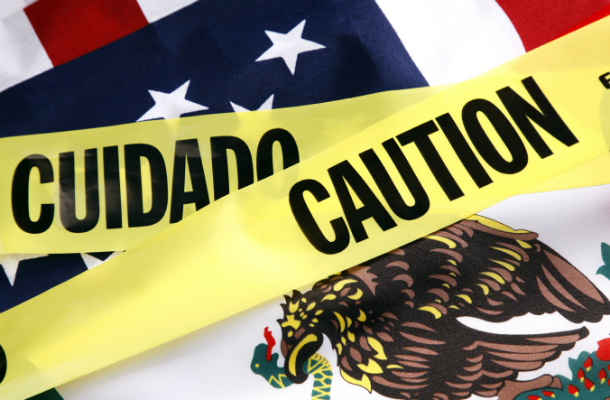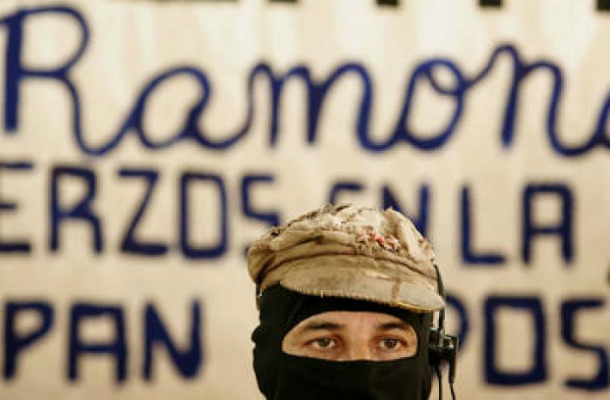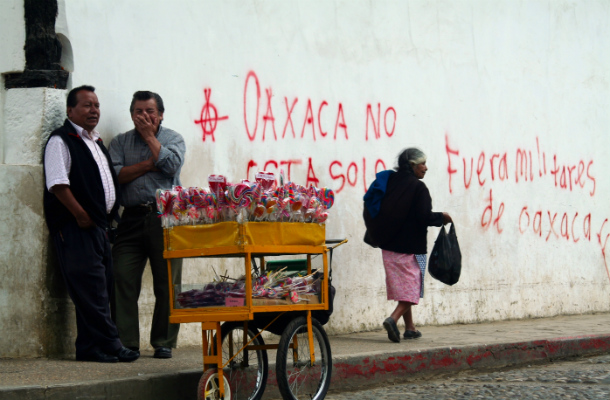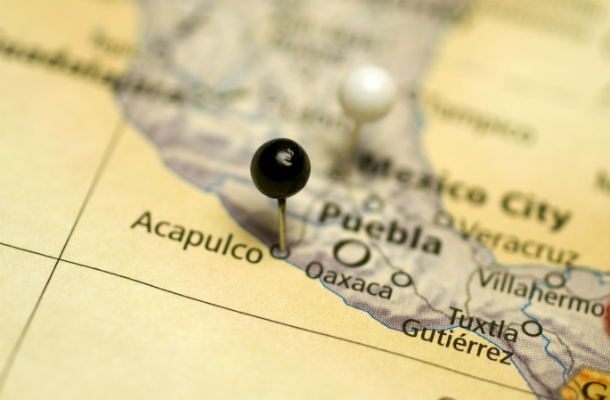M
Mag Pie
Guest
In the far south of Mexico a revolutionary heart still beats. A region with its own laws and ways. So is it safe and what should you expect?

Travel to Mexico is generally a good time. However we recommend keeping an eye out for some of the darker sides of the Mexican experience.
Travel safety in Chiapas
Protests, Strikes and Demonstrations in Mexico

Travel and Safety Tips in Chiapas
The image of Subcomandante Marcos, the masked, gun-toting revolutionary and poet, is hardly the Mexico Tourist Board's poster child. Yet the otherworldly state of Chiapas, a rebel stronghold since the Zapatista uprising of the early 1990s, remains one of Mexico's most exhilarating and bewildering travel experiences.
With its tapestry of mystical jungles, sublime temples, fabled murals, precipitous waterfalls, and yawning canyons, Chiapas has been on the adventure traveler's radar for decades.
The beautiful (and at times bristling) colonial town of San Cristóbal de las Casas, which draws Zapatista supporters, progressives, erudite scholars, artistes and archeologists, provides the launch pad to the area's cultural and natural attractions. It's a place where ancient Maya customs and modern conveniences coalesce and where political theater and paganism find expression in the town's cacophonous markets (where you can purchase your own souvenir Zapatista doll complete with pipe and machine gun) and arty bars and cafés.
Just a ten-minute drive from San Cristóbal, corn fields give way to Maya villages where schools and buildings are inscribed with political rhetoric. Signs make it clear that "you are in Zapatista rebel territory. Here the people command and the government obeys." While the armed struggle has long since ended and a peace pact ostensibly signed, Zapatistas still feel that their demands were never met.

Many Maya villages in Chiapas remain under Zapatista control, complete with their own autonomous justice, health and education systems. The villages of San Juan Chamula and Zinacantán remain deeply rooted in traditional Mayan beliefs and practices. From fire running to animal sacrifice, and even drinking Coca Cola to expurgate one's sins, there's never a dull moment. This is a land that keeps you on your toes and sharpens the senses of even the most jaded traveler.
While travelers should not feel unduly concerned about their safety when traveling to Chiapas - there are currently no state government advisories in effect - it's wise to adhere to certain protocols when visiting traditional Maya villages and make sure you don't overstep if you find yourself talking Mexican politics to a Zapatista sympathizer over a beer late at night in San Cristóbal de las Casas:

Protests, Strikes and Demonstrations in Mexico
A golden rule in Mexico: if you find yourself within arms reach of a protest or demonstration, run away, fast.
A city that teems with politically engaged students, capital to one of the poorest states in the nation, it's no surprise that the roots of rebellion have a habit of gestating in Oaxaca.
The city's infamous 2006 teacher's strike was a watershed moment in traveler's perception of what constitutes a safe haven. Oaxaca, revered as the culinary capital of Mexico, had long existed in the popular consciousness as a peaceful idyl replete with jaw-dropping Baroque churches, majestic stone buildings, breezy courtyards and a vibrant studio art scene.
When striking teachers rallied 40,000 supporters in a popular insurrection against the state and federal government, the fault lines that lay beneath the gorgeous colonial city were exposed.
Protesters attempting to force out Oaxaca's state governor set fire to government buildings and burned vehicles in running street battles with police that injured at least 43 people and left 12 dead (including an American cameraman). The downtown area was shutdown for five months as protesters constructed barricades from sand bags, old tires, barbed wire and burned-out vehicles. The strike finally came to a bloody end when police invaded the plaza, fired tear gas and, according to human-rights groups, attacked children and old people.
Tourism took a big hit. The lavish Camino Real hotel was trashed, hotel vacancy rates rose, businesses were wiped out, airfares bottomed out, and flights, cooking courses and language classes were canceled. Shock waves reverberated throughout Mexico. If Oaxaca isn't safe then where is?
Oaxaca has always been a politically charged state. Located 500km southeast of Mexico City, Oaxaca experiences more strikes and demonstrations than anywhere else in the country—no mean feat if you glance at the national newspaper on any given Sunday. While the teachers' uprising has been consigned to the history books, the city's adobe walls purged of graffiti and storefronts repaired, its legacy is reflected in recent violent protests that have crippled major cities, including Acapulco and Mexico City.
For travelers to Mexico, Oaxaca serves as a reminder that political rallies in Mexico can happen any place any time and can quickly descend into anarchy. Mexican police aren't known for their softly, softly approach and tend to follow a theory based on strike first, ask questions later.
On the bright side, since 2013 Oaxaca has been deemed (by the Mexican government!) one of the most peaceful states in the nation. President Obama restored the faith when he supported his daughter Malia's spring break foray to Oaxaca despite histrionic warnings about travel to Mexico.

Travel to Mexico is generally a good time. However we recommend keeping an eye out for some of the darker sides of the Mexican experience.
Travel safety in Chiapas
Protests, Strikes and Demonstrations in Mexico

Travel and Safety Tips in Chiapas
The image of Subcomandante Marcos, the masked, gun-toting revolutionary and poet, is hardly the Mexico Tourist Board's poster child. Yet the otherworldly state of Chiapas, a rebel stronghold since the Zapatista uprising of the early 1990s, remains one of Mexico's most exhilarating and bewildering travel experiences.
With its tapestry of mystical jungles, sublime temples, fabled murals, precipitous waterfalls, and yawning canyons, Chiapas has been on the adventure traveler's radar for decades.
The beautiful (and at times bristling) colonial town of San Cristóbal de las Casas, which draws Zapatista supporters, progressives, erudite scholars, artistes and archeologists, provides the launch pad to the area's cultural and natural attractions. It's a place where ancient Maya customs and modern conveniences coalesce and where political theater and paganism find expression in the town's cacophonous markets (where you can purchase your own souvenir Zapatista doll complete with pipe and machine gun) and arty bars and cafés.
Just a ten-minute drive from San Cristóbal, corn fields give way to Maya villages where schools and buildings are inscribed with political rhetoric. Signs make it clear that "you are in Zapatista rebel territory. Here the people command and the government obeys." While the armed struggle has long since ended and a peace pact ostensibly signed, Zapatistas still feel that their demands were never met.

Many Maya villages in Chiapas remain under Zapatista control, complete with their own autonomous justice, health and education systems. The villages of San Juan Chamula and Zinacantán remain deeply rooted in traditional Mayan beliefs and practices. From fire running to animal sacrifice, and even drinking Coca Cola to expurgate one's sins, there's never a dull moment. This is a land that keeps you on your toes and sharpens the senses of even the most jaded traveler.
While travelers should not feel unduly concerned about their safety when traveling to Chiapas - there are currently no state government advisories in effect - it's wise to adhere to certain protocols when visiting traditional Maya villages and make sure you don't overstep if you find yourself talking Mexican politics to a Zapatista sympathizer over a beer late at night in San Cristóbal de las Casas:
- Due to sporadic low-intensity guerilla warfare, always check the political situation before visiting the villages of San Juan Chamula and Zinacantán.
- It's advisable to experience Mayan villages as part of a tour or with a reputable guide who can explain the belief systems and values of a traditional Maya community and introduce you to villagers personally.
- Be prepared for culture shock and not the warmest of welcomes.
- Travelers are advised not to wander alone in the hills surrounding San Cristóbal de las Casas.
- Locals are particularly sensitive to dress (avoid revealing clothes) and manners; always ask before you take pictures.
- Persistent begging and soliciting should be countered with courteous, firm replies.
- Dedicated to the study, education and protection of Chiapas's indigenous population, Na-Bolom, in the center of San Cristóbal, is an invaluable stop before exploring.
- A permit is required from the tourist office in town to enter the church of San Juan Chamula.

Protests, Strikes and Demonstrations in Mexico
A golden rule in Mexico: if you find yourself within arms reach of a protest or demonstration, run away, fast.
A city that teems with politically engaged students, capital to one of the poorest states in the nation, it's no surprise that the roots of rebellion have a habit of gestating in Oaxaca.
The city's infamous 2006 teacher's strike was a watershed moment in traveler's perception of what constitutes a safe haven. Oaxaca, revered as the culinary capital of Mexico, had long existed in the popular consciousness as a peaceful idyl replete with jaw-dropping Baroque churches, majestic stone buildings, breezy courtyards and a vibrant studio art scene.
When striking teachers rallied 40,000 supporters in a popular insurrection against the state and federal government, the fault lines that lay beneath the gorgeous colonial city were exposed.
Protesters attempting to force out Oaxaca's state governor set fire to government buildings and burned vehicles in running street battles with police that injured at least 43 people and left 12 dead (including an American cameraman). The downtown area was shutdown for five months as protesters constructed barricades from sand bags, old tires, barbed wire and burned-out vehicles. The strike finally came to a bloody end when police invaded the plaza, fired tear gas and, according to human-rights groups, attacked children and old people.
Tourism took a big hit. The lavish Camino Real hotel was trashed, hotel vacancy rates rose, businesses were wiped out, airfares bottomed out, and flights, cooking courses and language classes were canceled. Shock waves reverberated throughout Mexico. If Oaxaca isn't safe then where is?
Oaxaca has always been a politically charged state. Located 500km southeast of Mexico City, Oaxaca experiences more strikes and demonstrations than anywhere else in the country—no mean feat if you glance at the national newspaper on any given Sunday. While the teachers' uprising has been consigned to the history books, the city's adobe walls purged of graffiti and storefronts repaired, its legacy is reflected in recent violent protests that have crippled major cities, including Acapulco and Mexico City.
For travelers to Mexico, Oaxaca serves as a reminder that political rallies in Mexico can happen any place any time and can quickly descend into anarchy. Mexican police aren't known for their softly, softly approach and tend to follow a theory based on strike first, ask questions later.
On the bright side, since 2013 Oaxaca has been deemed (by the Mexican government!) one of the most peaceful states in the nation. President Obama restored the faith when he supported his daughter Malia's spring break foray to Oaxaca despite histrionic warnings about travel to Mexico.
